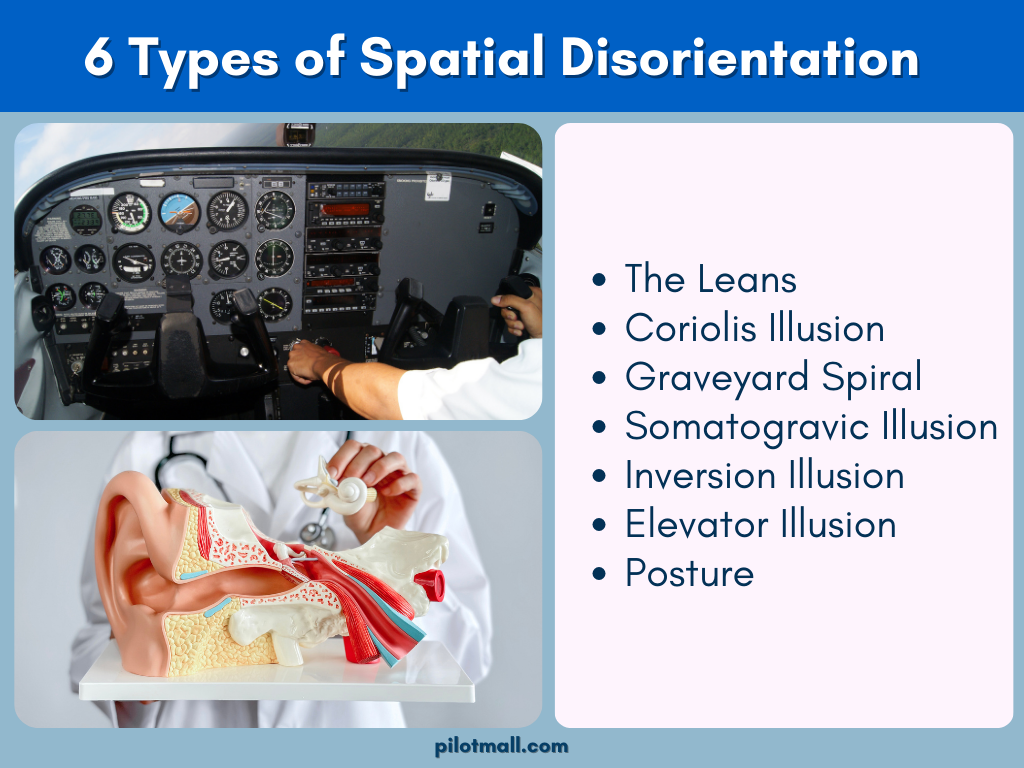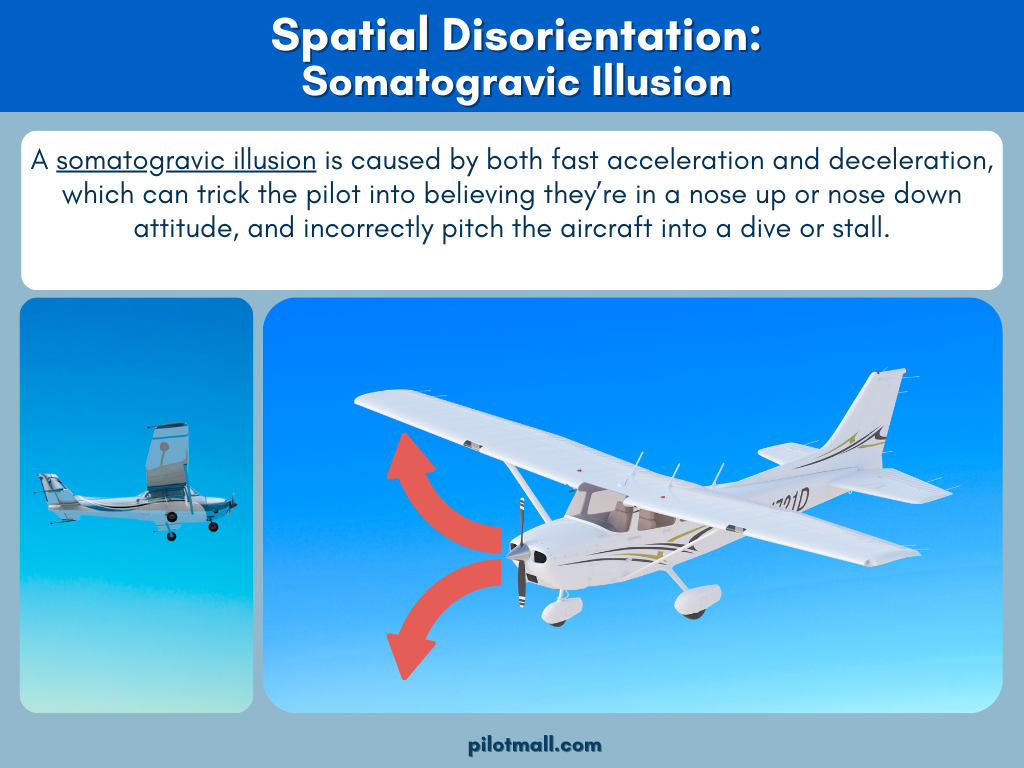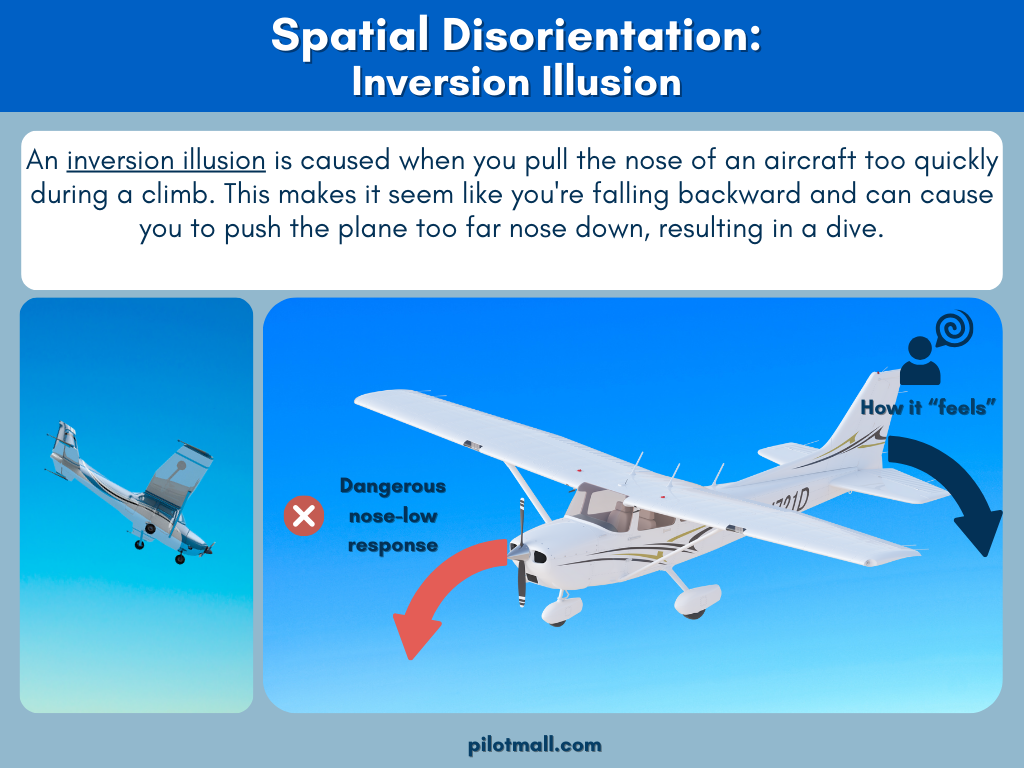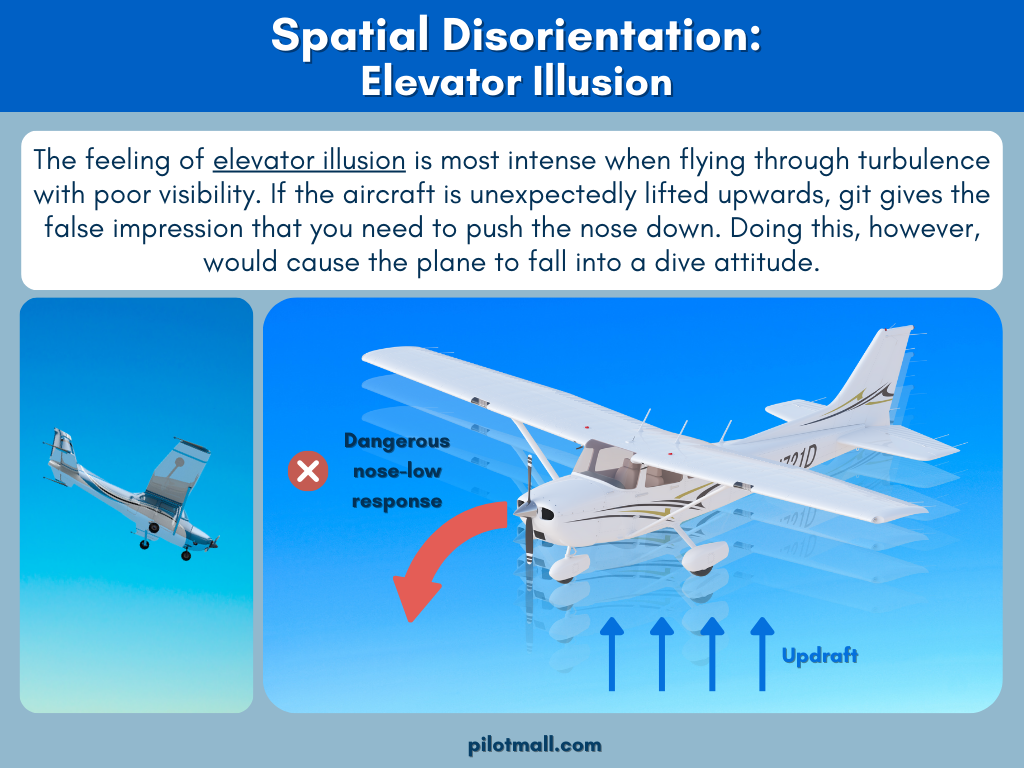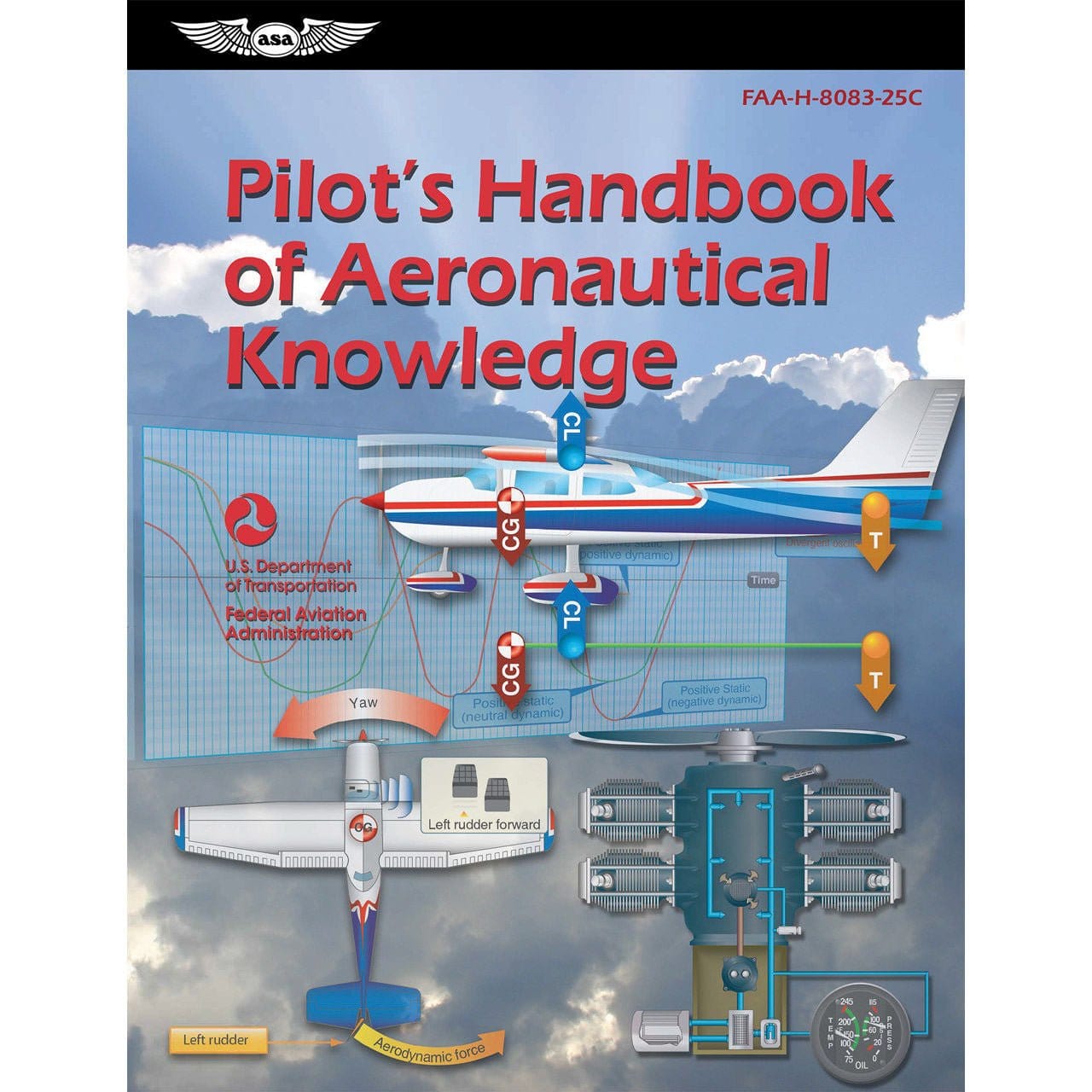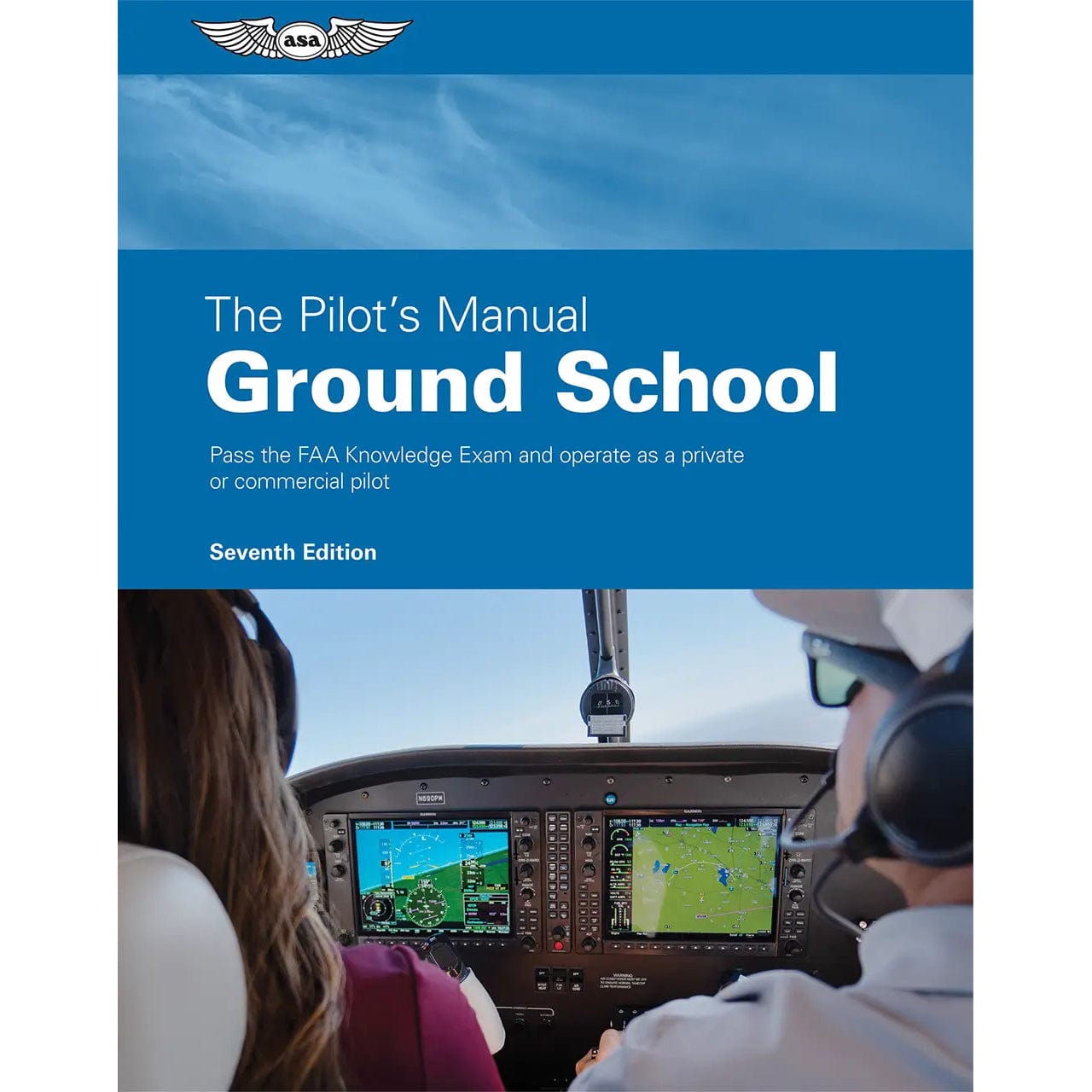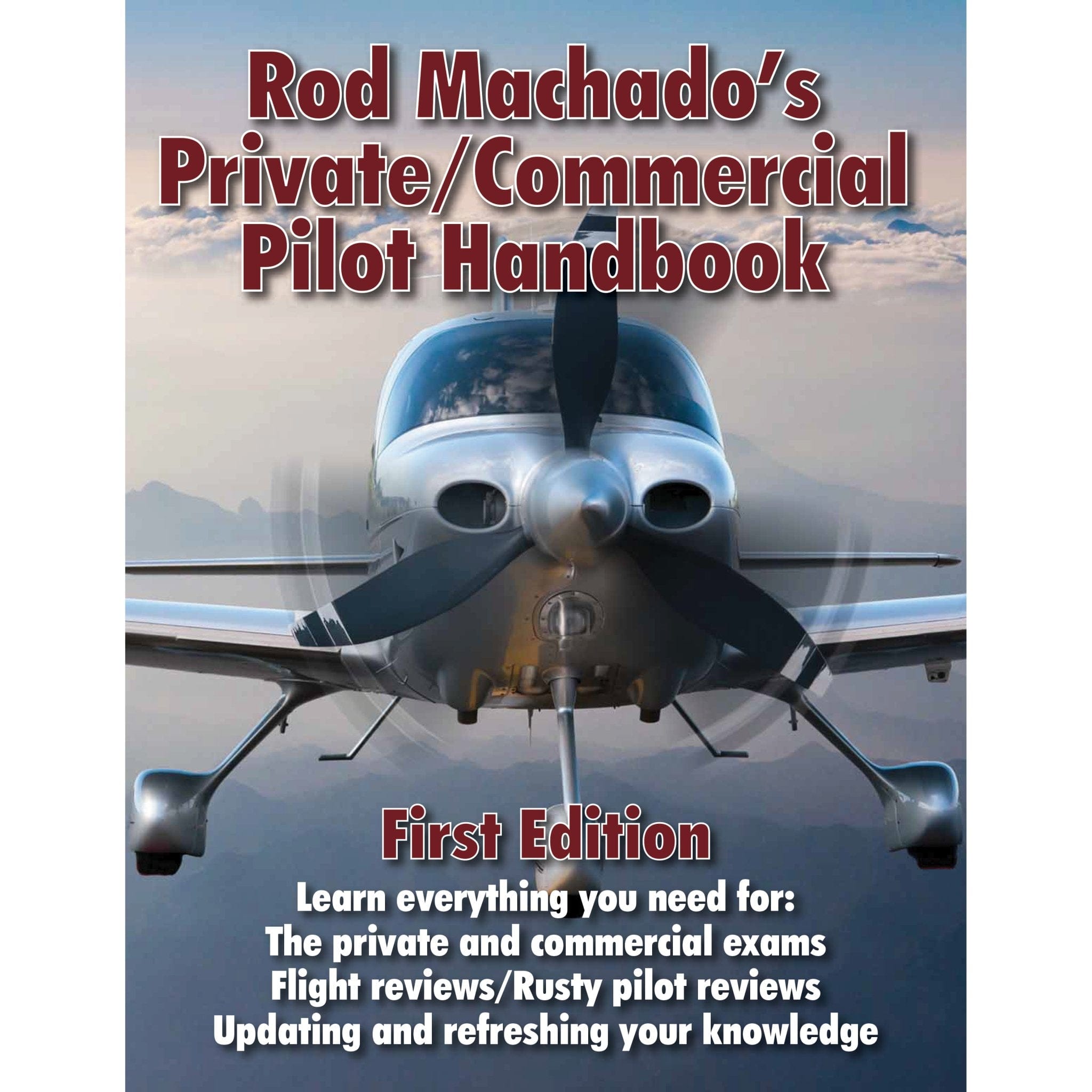We may adore soaring through the skies, but our bodies are made for an existence on land. This means that our brains are not engineered to process the stimuli we experience when we're airborne. It is this discrepancy that brings about spatial disorientation.
But how can we tell when this is happening and even more importantly, what can we do to cope with it? We will answer these questions in this article, so read on to find out!
What is Spatial Disorientation?
When the brain doesn't interpret signals from the body properly, spatial disorientation can occur. This involves a false perception of one's position and motion in relation to the earth. Without visible references like clouds, fog, or terrain, pilots become confused swiftly.
To understand the severity of this problem, a FlySafe post put out by the FAA stated that spatial disorientation caused 5-10% of all general aviation accidents.
To avoid this, the pilot flying must not rely on visual cues and learn how to fly exclusively by their instruments to reclaim spatial orientation and maintain straight and level flight. But if these systems fail in limited visibility conditions, pilots need to be aware of how to handle this scenario as well.
The human body uses three systems to figure out movement and orientation:
-
Visual system – Our eyes, sense position based on what we see.
-
Vestibular system – Organs found in the inner ear that sense position by the way we’re balanced.
-
Somatosensory system – Nerves in the skin, muscles, and joints, which, along with hearing, sense position based on gravity, feeling, and sound.
The 6 Types of Spatial Disorientation
There are six different types of illusions that can cause spatial disorientation for a pilot. It is important for a pilot to trust their instruments more than what their body is interpreting in order to maintain the proper aircraft attitude.
Let's go through each of the spatial disorientation symptoms and effects.
(3D"Plane"by osmosikum is licensed under Creative Commons Attribution)
1. The Leans
The leans are one of the most common forms of spatial disorientation. This type of illusion will make you think that you are still upright, while you are actually in the middle of a turn. This usually happens when a turn is made too gradually; the liquid in your ears will fool your mind and cause spatial disorientation.
How to prevent it:
Pilots will need to be conscious of not turning too gradually and must turn to the flight instruments when making adjustments to counter any false perception.
2. Coriolis Illusion
The Coriolis illusion occurs when a person undergoes a sustained turning motion for an extended period of time. It causes the fluid in the ears to cease movement, leaving the brain with the impression that it is in straight and level flight when actually it isn't.
During the Coriolis illusion, if the pilot has an abrupt head movement, it can cause the fluid inside of their ear to shift along a different axis, giving a feeling as if the plane was performing a maneuver when it actually wasn't. This can be dangerous if not taken into consideration.
How to prevent it:
If you start to feel off-balance, try to avoid sudden head movements while piloting. Rely on the instruments in the aircraft and use them as a guide to stabilize your flight path and bring the plane back to straight and level flight.
3. Graveyard Spiral and Graveyard Spin
The name "Graveyard Spiral" alone instills fear in pilots, as it should. A graveyard spiral is an accidental high-rate-of-descent tight banked turn. If an aircraft is turning for too long, the fluid in its pilot's ears stops moving, creating the illusion that they are turning in the opposite direction. This can lead to a disastrous situation if the pilot pulls back on the yoke and returns to the original turn—causing a deadly spiral dive and rapid altitude loss.
The difference between a graveyard spiral and a "graveyard spin" is that a spin is caused by a stall.
How to prevent it:
Keeps up your scan and trust your instruments.
How to recover from a Graveyard Spiral:
-
Power to idle
-
Level the wings
-
Slowly return to nose-level attitude
-
When recovered, add power
4. Somatogravic Illusion
A somatogravic illusion is caused by both rapid acceleration and rapid deceleration. Fast acceleration can trick the organs in your ears into believing that the nose of the plane is pointing upwards. This will give you the impression that you need to push the nose forward, causing a dive attitude.
The same thing happens when decelerating quickly but in the opposite direction—your body might think that you're pitching your nose low and make you pull the nose up too severely, causing a stall.
How to prevent it:
When the visibility is low, rely on your flight instruments and don't make sudden changes in your acceleration or deceleration.
5. Inversion Illusion
An inversion illusion is caused when you pull the nose of an aircraft too quickly during a climb. This makes it seem like you're tumbling backwards (inverted) and can cause you to push the plane too far nose forward, resulting in a dive attitude.
How to prevent it:
When transitioning from a climb to level flight, make sure you perform this action in a steady motion and avoid rapid or quick attempts to return to straight and level. Be aware of your attitude indicator.
6. Elevator Illusion
The feeling of elevator illusion is most intense when flying in turbulent weather with poor visibility. At these times, a sudden gust can unexpectedly lift the aircraft upwards, giving you the false impression that you have to push forward and keep the nose down to maintain level flight Doing this, however, would cause the plane to fall into a dive attitude.
How to prevent it:
Avoid pushing the aircraft into a dangerous attitude by following the attitude indicator, scanning your instruments, and keeping the wings level to keep spatial orientation.
Other Important Factors
There are other factors to consider when
Posture
Being mindful of your posture can go a long way in relation to helping you stay spatially oriented, and trust your instruments over what your body is perceiving the situation to be.
Optical Illusions
Optical illusions can play a part in spatial disorientation, especially at night.
Post Traumatic Stress Disorder
You might be wondering how is spatial disorientation related to PTSD? Spatial disorientation and brain fog can be caused by certain mental health disorders such as PTSD. A potential pilot should be open and honest with medical professionals regarding their mental health history when looking into medical certification qualifications for becoming a pilot.
FAA Spatial Disorientation Materials
The FAA released helpful materials to help learn and understand more about this important topic.

-
What is an example of spatial disorientation?
It is important to look at fatal mistakes in aviation in order to understand why it's so vital to understand the risks of becoming disoriented in the aircraft. On 26 January 2020, a Sikorsky S76B crashed into terrain after the pilot flew into IMC and attempted to climb, leading to spatial disorientation. All occupants were killed and inadequate risk management by the aircraft operator was found to have contributed to the accident.
-
What causes spatial disorientation?
Situations with marginal visibility or visual cues, coupled with fast movements of either the pilot's body or the aircraft can give false sensory input to the brain and cause spatial disorientation.
-
What is the most common vestibular illusion?
The Leans is the most common illusion caused by the sensory system.
-
How do you overcome vestibular illusions?
Trusting the instruments in the aircraft over physical senses.

|
ASA Airplane Flying HandbookFor decades, the FAA's Airplane Flying Handbook has served as the foundational resource on the numerous flight maneuvers fixed-wing pilots must master. This heavily updated version has been expanded to address new areas of concern including runway incursion avoidance, positive exchange of flight controls, checklist usage, and jet & turboprop operations. |
Takeaway
Maintaining spatial orientation, especially when flying in instrument conditions is vital for safety. We've covered how crucial it is for pilots to recognize the potential dangers of spatial disorientation, which can occur when relying on their other senses. Highlighting the perils of abrupt changes and sudden head movements, it sheds light on the human factors that can lead even experienced aviators to experience spatial disorientation.
Stay vigilant, stay oriented, and stay safe in the skies.
Want to Learn More?
Check out these links!
Did you find this article helpful?
Do you think we missed anything important? Let us know in the comments below!



